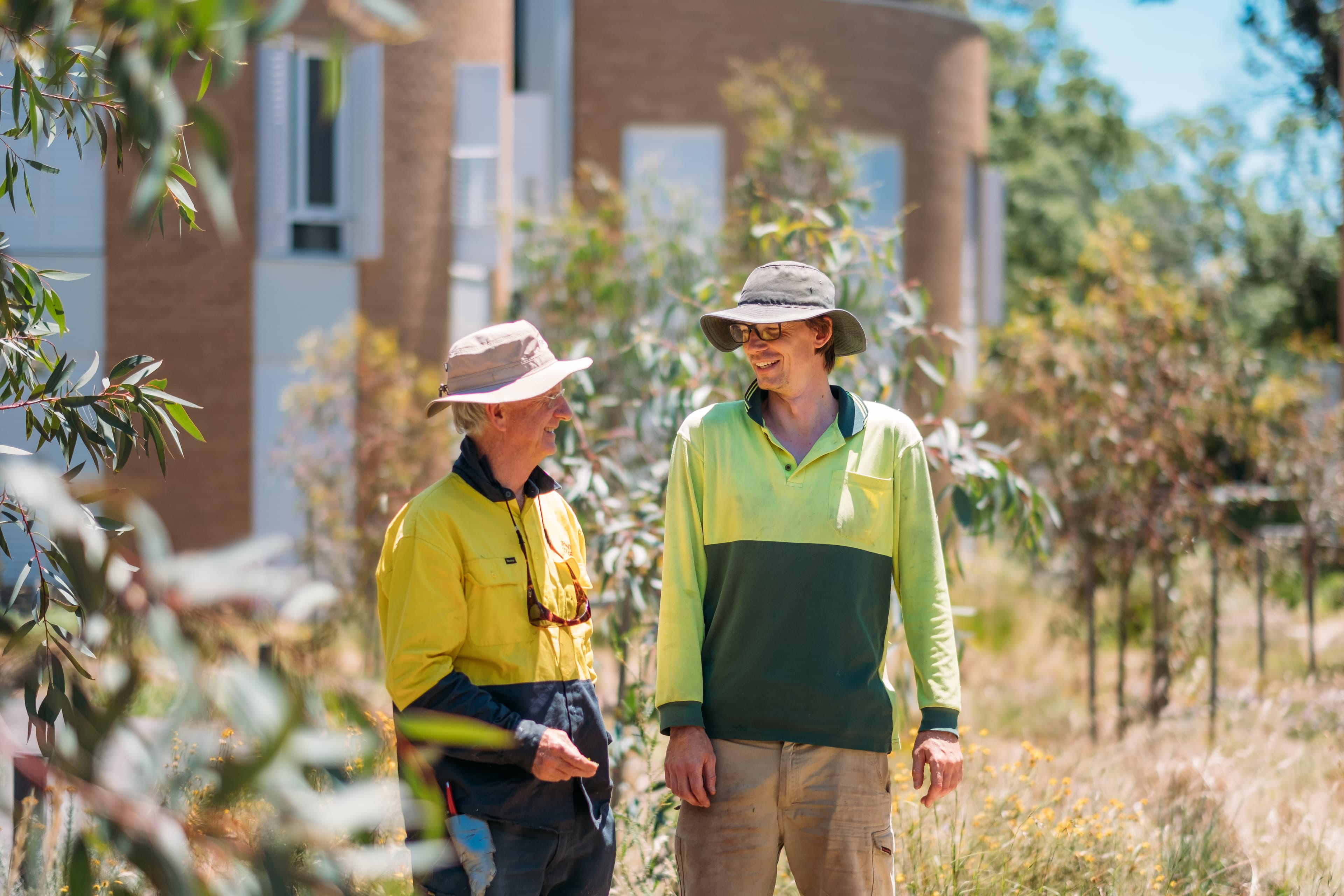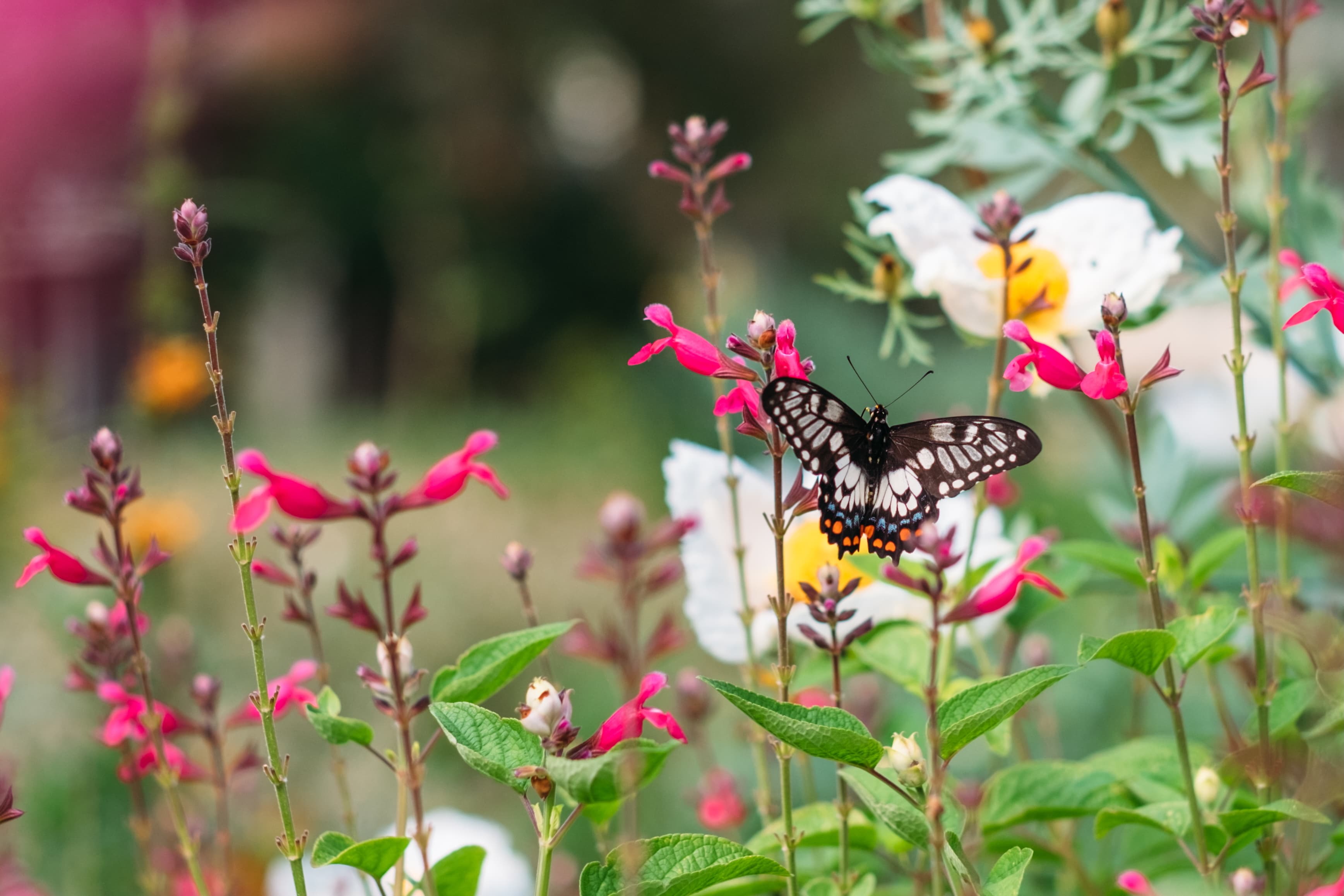Blooming Marvellous

Ormond has long been blessed by beautiful gardens. But this wasn’t always the case.
In the beginning, there were cows.
In the beginning, there were cows.
Thursday 14 September 2023 • 5 minute read
Ormond has long been blessed by beautiful gardens. But this wasn’t always the case.In the beginning, there were cows. Ormond had very little garden for its first fifty years, most of the grounds being pasture for the Master’s animals. By 1929 the cows had gone and their paddocks were replaced by ‘rough lawns’ maintained by both mowing and visiting roving grass trimmers, also known as ‘sheep’.The first attempts at a garden were intentionally British in style and featured European trees, shrubberies, privet hedges and rambling roses. At one time the tennis court had a different variety of rose planted on each of its four sides.

In the 1930s the Quad was also rejuvenated, planted with rhododendrons, azaleas and maples, at which point students stopped tossing toothbrushes, cigarette cartons and other rubbish out of their windows.
Further beautification extended the Main Drive into a graceful arc that met College Crescent at both ends. Although it has been said the drive formed a perfect mathematical parabola designed by then-Master and mathematician David Picken, there is no record that this was the case.‘Kaye Scott’s Gum’None of our trees predate the College. The two majestic gums on Picken Lawn were planted sometime after 1900 but one was later blown down in a storm. It was saved by Kaye Scott (of the eponymous room) who was then a resident tutor and later a major donor. Scott organised a group to lift and replant the tree, placing the roots back in the ground so it could flourish again.
Further beautification extended the Main Drive into a graceful arc that met College Crescent at both ends. Although it has been said the drive formed a perfect mathematical parabola designed by then-Master and mathematician David Picken, there is no record that this was the case.‘Kaye Scott’s Gum’None of our trees predate the College. The two majestic gums on Picken Lawn were planted sometime after 1900 but one was later blown down in a storm. It was saved by Kaye Scott (of the eponymous room) who was then a resident tutor and later a major donor. Scott organised a group to lift and replant the tree, placing the roots back in the ground so it could flourish again.

Our gardens were shaped by two stalwarts who each tended them for decades.The first, Mr Arthur Smith, was nicknamed ‘The Genius.’ He had a seemingly inexhaustible fund of stories and was largely responsible for the transformation of the College grounds over his 28 years of service. When Smith retired in 1958 there were only five plants on the College grounds that he hadn’t personally installed.A second formative influence on the gardens was Colin Barnes, who retired in 2020 after 38 years in the Ormond garden. Colin oversaw many changes, including a move away from hiding modernist architecture behind vines and shrubs and the change from thirsty flowerbeds to drought tolerant plants along the drive. Colin’s bushwalking trips to central Australia inspired the plantings in the Indigenous garden near the Graduate Buildings, the first part of Ormond’s grounds to have a strongly Australian rather than European feel.Now in the capable hands of Michael ‘Stretch’ Neugebauer, with the help of Will McKnight, our gardens continue to bloom.



